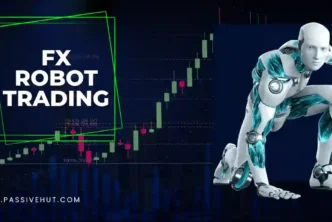Forex robots, or expert advisors (EAs), are widely utilized by traders to automate trading decisions and optimize performance in the dynamic forex market. However, evaluating the effectiveness of these robots requires a thorough understanding of performance metrics. This article examines key performance metrics used to assess forex robot performance, providing insights into their interpretation and implications for traders.
In the realm of forex trading, where precision and profitability are paramount, the use of forex robots has become increasingly prevalent. These automated trading systems are designed to execute trades based on predefined algorithms and criteria, offering traders efficiency, objectivity, and potential profitability. However, assessing the performance of forex robots entails a nuanced understanding of various performance metrics to make informed decisions and optimize trading strategies.
Common Performance Metrics:
Profit Factor:
The profit factor is a crucial performance metric that quantifies the relationship between gross profits and gross losses generated by the forex robot. It is calculated by dividing the total gross profit by the total gross loss. A profit factor greater than 1 indicates that the robot’s profits outweigh its losses, suggesting a potentially profitable strategy. However, traders should consider other metrics alongside the profit factor to gain a comprehensive understanding of the robot’s performance.
Return on Investment (ROI):
ROI measures the profitability of the forex robot relative to the initial investment or capital deployed. It is expressed as a percentage and calculated by dividing the net profit generated by the robot by the initial investment and multiplying by 100. A higher ROI indicates a more profitable trading strategy, but traders should consider factors such as risk-adjusted returns and drawdowns when evaluating ROI.
Drawdown:
Drawdown measures the peak-to-trough decline in the equity curve of the forex robot, reflecting the extent of losses incurred during a losing streak. It is expressed as a percentage and provides insight into the risk exposure and resilience of the trading strategy. While a lower drawdown is desirable, traders should assess drawdown in conjunction with other metrics to gauge the overall risk-reward profile of the robot.
Sharpe Ratio:
The Sharpe ratio is a risk-adjusted performance metric that evaluates the return generated by the forex robot relative to its volatility or risk. It is calculated by dividing the excess return (i.e., return above the risk-free rate) by the standard deviation of returns. A higher Sharpe ratio indicates superior risk-adjusted returns, reflecting a more efficient use of capital by the robot. Traders should aim for a positive Sharpe ratio, but it should be interpreted in conjunction with other metrics to assess overall performance.
Win Rate:
The win rate, or winning percentage, measures the proportion of winning trades relative to total trades executed by the forex robot. It is expressed as a percentage and provides insight into the accuracy and effectiveness of the robot’s trading strategy. While a high win rate is desirable, traders should consider other factors such as risk-reward ratio and average profit/loss per trade when evaluating the robot’s performance.
Interpreting Performance Metrics:
Holistic Assessment:
Traders should avoid relying solely on individual performance metrics and instead conduct a holistic assessment of the forex robot’s performance. By considering multiple metrics in conjunction, traders can gain a comprehensive understanding of the robot’s profitability, risk exposure, and consistency.
Contextual Analysis:
Performance metrics should be interpreted in the context of market conditions, trading strategies, and risk preferences. What may be considered acceptable performance for one trader may not meet the criteria of another. Therefore, traders should align performance metrics with their trading objectives and risk tolerance to make informed decisions.
Long-Term Perspective:
Forex robot performance should be evaluated over an extended period to account for varying market conditions and ensure robustness. Short-term fluctuations in performance may not accurately reflect the robot’s long-term profitability and reliability. Traders should assess performance metrics over multiple market cycles to validate the efficacy of the robot’s trading strategy.
Conclusion:
Performance metrics play a pivotal role in evaluating the effectiveness of forex robots and optimizing trading strategies. By understanding and interpreting key metrics such as profit factor, ROI, drawdown, Sharpe ratio, and win rate, traders can make informed decisions regarding the selection and optimization of forex robots. However, it is essential to conduct a holistic assessment, consider contextual factors, and maintain a long-term perspective to effectively decipher forex robot performance metrics and enhance trading outcomes.





